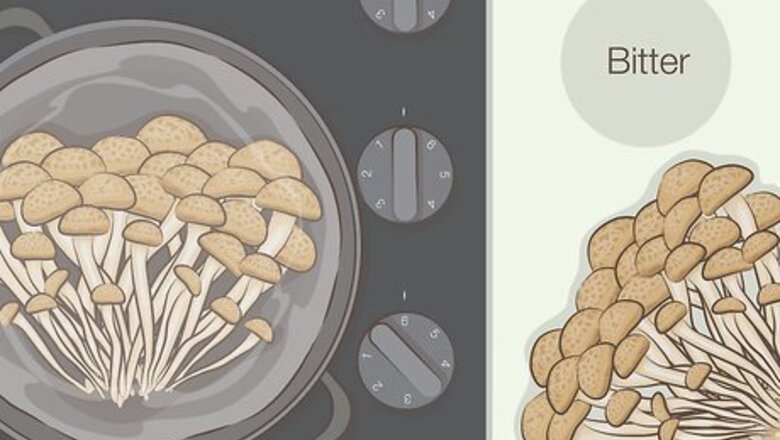
views
X
Research source
In this article, we’ll provide some basic cooking tips and give you a handful of recipe ideas so you can discover different ways to enjoy these mushrooms. We’ll also walk you through the fast-and-easy process of picking, storing, and prepping bunashimeji mushrooms.
Basic Cooking Tips
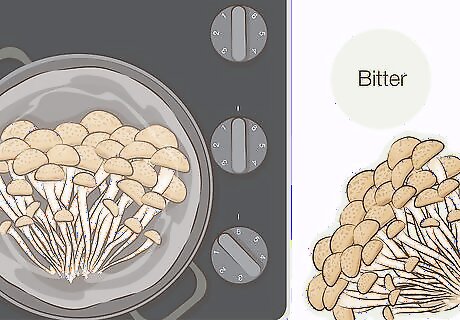
Cook bunashimeji mushrooms to eliminate their bitter flavor. While some mushrooms are great raw, bunashimeji mushrooms should always be cooked before being added to other dishes or enjoyed on their own. Raw, they have an unpleasant, bitter taste. Raw bunashimeji mushrooms are also harder to digest. If you do eat these mushrooms raw, they won’t hurt you.
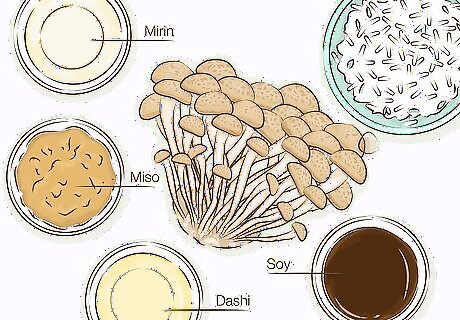
Pair bunashimeji mushrooms with Asian flavors. Focus on staples like mirin, miso, soy, dashi, and rice. If you’re making a meal that includes any of these flavors, bunashimeji mushrooms would be a great addition. In addition to Asian flavors, bunashimeji mushrooms are also a nice accompaniment to mild herbs and pasta dishes.
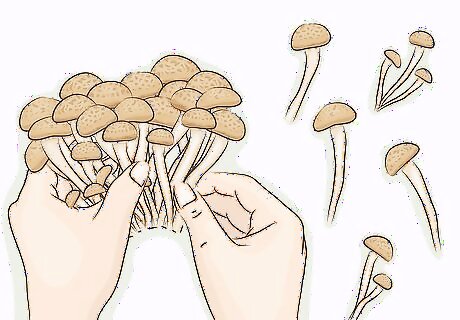
Separate the mushrooms into bite-sized pieces to make them easier to eat. You can chop the mushrooms into smaller pieces with a knife or simply divide them by hand after you’ve removed the base. This is especially important for dishes where you want to get a little bit of everything onto your form or spoon for the best tasting bite. Do your best to make each clump or piece of mushrooms roughly the same size. They’ll cook through more evenly that way.
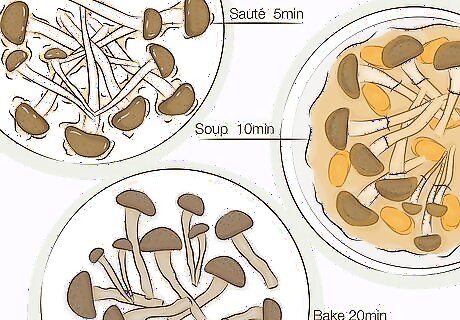
Heat the mushrooms through until they’re warm but still slightly firm. Sauté bunashimeji mushrooms in olive oil (a great flavor pairing), add them to soups and stews, or bake them in the oven. Sautéing takes just about 5 minutes, simmering in soups takes 10 minutes, and baking in the oven takes 20 minutes. This basic preparation method gives you the foundation to add these mushrooms to all kinds of dishes. They don’t take long to prepare and are hard to overcook.
Recipe Ideas
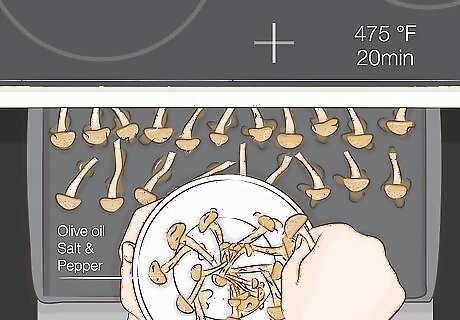
Roast the mushrooms for 20 minutes for a hands-off cooking method. Place a baking sheet in the oven and preheat it to 475 °F (246 °C). Put de-stemmed bunashimeji mushrooms in a large bowl, and drizzle them with ⁄3 cup (79 mL) of olive oil. Sprinkle them with salt and pepper, and toss them to coat them in the oil. Spread the mushrooms out in an even layer on the preheated baking sheet. Roast them for 20 minutes, taking them out occasionally to give them a quick stir. Stirring the mushrooms while they roast ensures they cook through evenly. This is a fast, simple way to prep bunashimeji mushrooms. They’re tasty enough to eat on their own, or you could combine them with other veggies, stir them into a rice or pasta dish, or even use them to top a salad. Always use oven mitts or a towel to take things in and out of the oven!
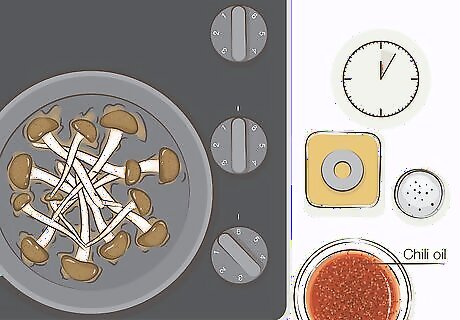
Drizzle sautéed mushrooms with chili oil to add a spicy kick to savory dishes. De-stem your mushrooms and cook them in a skillet with olive oil on high heat for 5 minutes. Make sure to stir them frequently so they don’t burn. Once they’re done, sprinkle them with a little salt and drizzle them with chili oil to taste. Serve them over hummus, on toast, or as a side with steak or chicken. Make your own chili oil by heating 4 tablespoons (59 mL) of olive oil in a saucepan over medium heat for 1–2 minutes. Once it’s hot and just about to sizzle, remove the pan from the heat and stir in 1/2 tbsp (3 grams) of crushed red pepper. Let the oil cool and marinate for 2 hours before transferring it to a lidded glass jar. This is a great way to prepare a quick appetizer or side for those who like spicy foods.
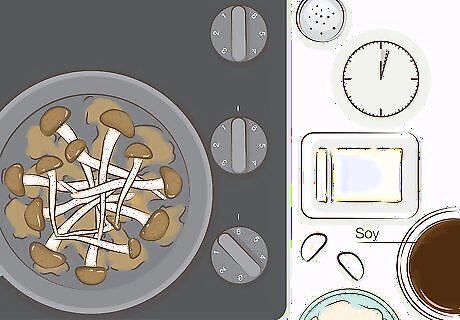
Make a bunashimeji stir-fry when you need dinner on the table fast. Melt butter in a skillet over medium-high heat. Once the pan is really hot, add the de-stemmed mushrooms and cook them for 2 minutes, stirring frequently. Add minced garlic and cook for 30 more seconds. Add 1 tablespoon (15 mL) of soy sauce, 1/2 tsp (6 grams) of salt, and 1/4 tsp (0.6 grams) of white pepper. Cook until the soy sauce has mostly evaporated, then remove the skillet from the heat. Top with sliced scallions and enjoy! Mix with pasta or rice for an even more filling dish.
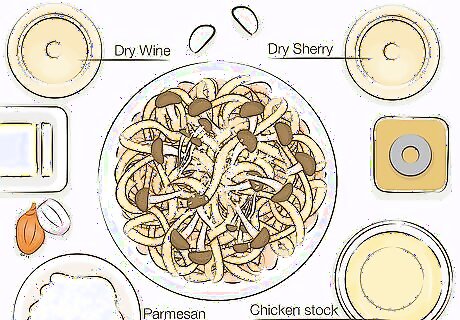
Cook a savory mushroom pasta for a filling, aromatic dinner. Start by sautéing the mushrooms in 2 tablespoons (30 mL) of olive oil to soften them, then add 3 minced shallots and 2 minced garlic cloves. Make a pan sauce out of ⁄2 cup (120 mL) of dry wine or ⁄4 cup (59 mL) of dry sherry and 1 cup (240 mL) of chicken stock, and cook it down until it thickens. Toss the mushrooms and sauce with 1 pound (0.45 kg) of cooked pasta, adding 6 tbsp (85 grams) of unsalted butter to make sure the sauce covers all the noodles evenly. Top the dish with grated parmesan cheese and fresh parsley. Feel free to add other varieties of mushrooms to this dish, too! Shiitake, oyster, cremini, and chanterelles would be tasty additions.
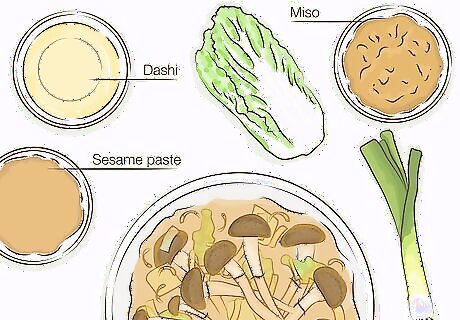
Toss bunashimeji mushrooms into Asian-flavors soups and stews to add bulk. For example, make a delicious soup with 6 cups (1,400 mL) of dashi stock, 3 tbsp (51 grams) of miso paste, 2 tbsp (30 grams) of sesame paste, 2 thinly sliced leeks, 1/2 small Chinese cabbage, and 5 ounces (140 g) of bunashimeji mushrooms. You could also add tofu, noodles, or even quail eggs to the soup to bulk it up a bit. Let the mushrooms and other veggies cook for about 10 minutes to soften and warm through. You could also try adding bunashimeji mushrooms to less typical dishes, like chicken noodle soup, minestrone, pasta Fagioli, or potato soup.
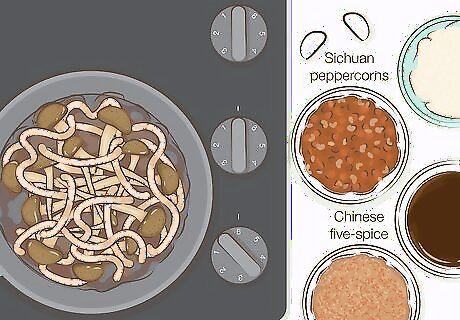
Make udon noodles with mushrooms for a filling, Asian-inspired dish. Mix ⁄4 cup (59 mL) of soy sauce, 2 minced garlic cloves, 5 crushed Sichuan peppercorns, 2-3 dashes of Chinese five-spice, and 1/4 tsp (0.5 grams) of black or white pepper. Toss 5 ounces (140 g) of de-stemmed mushrooms in the sauce. Add 1 tablespoon (15 mL) of vegetable oil to a skillet, and let it get super hot. Pour the mushrooms and sauce into the skillet and cook them for 3–4 minutes, stirring frequently. Add 1 pound (0.45 kg) of cooked udon noodles to the skillet and toss everything together before serving. You can buy udon noodles in a package from the store, but check out this article if you want to try your hand at making them yourself!
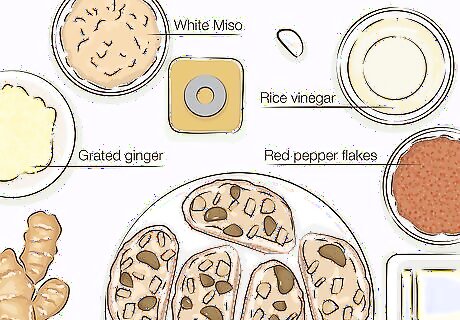
Prepare a tasty mushroom crostini appetizer the next time you have a party. Toss de-stemmed mushrooms with 3 tablespoons (44 mL) of melted unsalted butter, 2 tablespoons (30 mL) of olive oil, 1 tablespoon (15 mL) of white miso paste, 1 teaspoon (4.9 mL) of grated ginger, 1 teaspoon (4.9 mL) of rice vinegar, 1 minced garlic clove, and a pinch of red pepper flakes. Mix everything to coat the mushrooms, then spread them out on a baking sheet and roast them for 18–20 minutes at 425 °F (218 °C). Stir them after the first 10 minutes. Top baked crostini with spoonfuls of the mushroom mix. Store leftovers in the fridge in an airtight container for up to 2 days.
Storage and Preparation
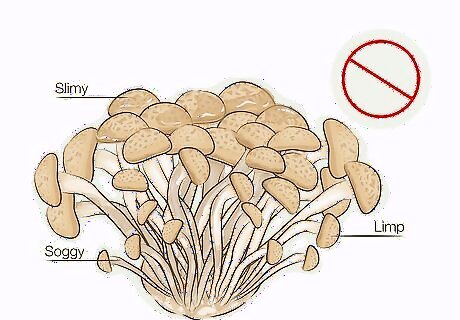
Choose mushrooms that look firm and dry. If they appear soggy, slimy, or limp, leave them on the shelf! Fresh bunashimeji mushrooms have firm stems and caps. They’re usually sold in plastic-wrapped packages and come in little bundles. If you can’t find this variety at your local grocery store, check out an Asian market. You can usually find both white and brown bunashimeji mushrooms. Brown ones tend to be a little more bitter, but that bitterness goes away once they’re cooked.
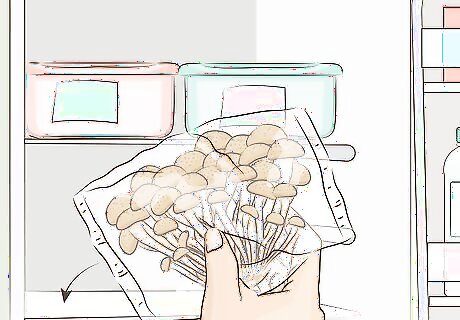
Leave fresh mushrooms in their package and store them in the fridge. Leaving them wrapped preserves their freshness. If you opened a package of mushrooms but didn’t cook all of them, put what’s left in a resealable plastic bag and keep it in the fridge. If you get the mushrooms into the fridge straight from the store, they'll last for a few weeks. Once the package is open, try to use them within 7 days for the freshest taste. Get rid of mushrooms that are slimy or smell funky.
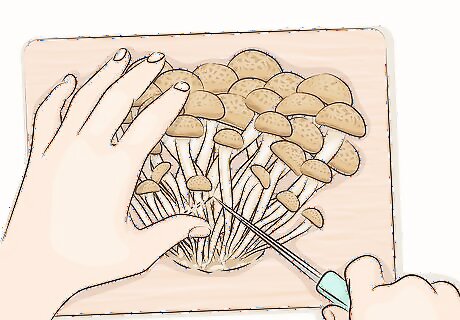
Chop the base off of a cluster of bunashimeji mushrooms. These mushrooms are held together at the bottom so that they look like a small clump. Trim off the base so that the mushrooms fall away in individual pieces. The stems are totally edible, and it’s common practice to cook them along with the caps. Always use a clean cutting board and kitchen knife to prep your ingredients.
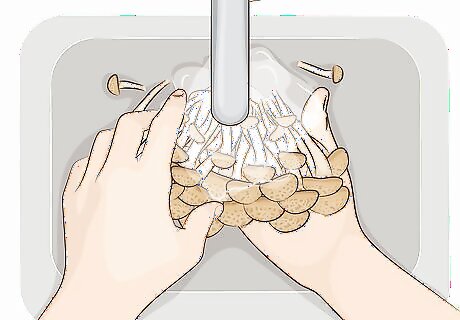
Rinse the mushrooms just before cooking to remove any dirt. Most bunashimeji mushrooms are already pretty clean because of how they’re grown, but it won’t hurt to give them a quick rinse before cooking them. Just put them in a colander or hold them in your hand while running a gentle stream of water over them. If the mushrooms don’t look very dirty, just spot clean them with a brush or towel. It’s best to avoid getting mushrooms too wet before cooking because it can make them slimy. If possible, prep everything else for your meal first before rinsing the mushrooms. That way, you can go straight from prep to cooking with minimal time in between. Your mushrooms will taste the freshest that way.




















Comments
0 comment